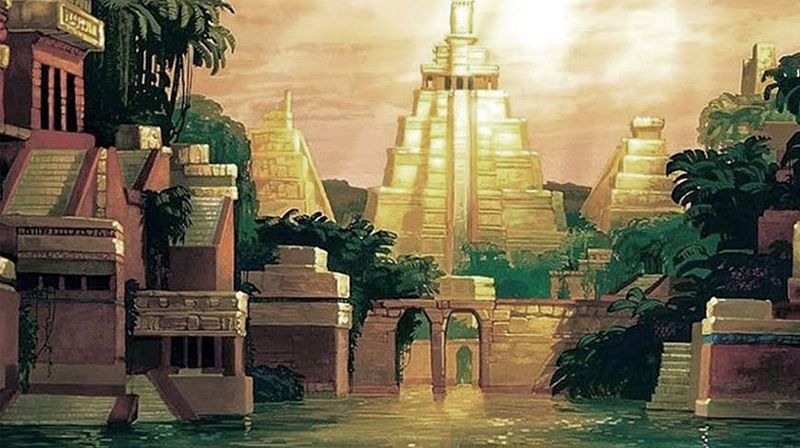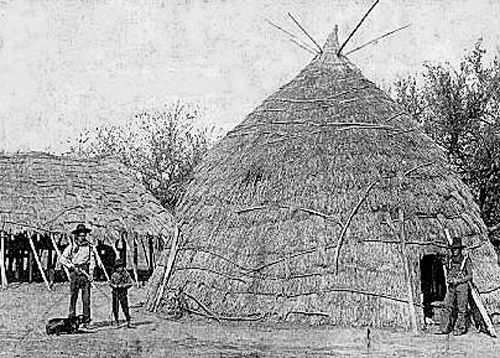
The Golden Mirage of the Plains: Kansas and the Enduring Legend of Quivira
America, a land forged in ambition and myth, holds countless legends etched into its vast landscape. From the lost city of El Dorado to the fabled Fountain of Youth, these tales have driven explorers, shaped destinies, and continue to whisper through the annals of history. Among these, the Kingdom of Quivira, a fabled city of gold hidden deep within the vast expanse of what is now Kansas, stands as a poignant testament to the intoxicating power of belief, the clash of cultures, and the stark reality that often awaits those pursuing a golden mirage.

For centuries, the name Quivira evoked images of untold wealth, rivaling the Aztec and Inca empires. It was the ultimate prize in the Spanish colonial quest for riches, a shimmering beacon on the horizon of the Great Plains. But the true story of Quivira is far more complex and profound than a simple treasure hunt. It is a narrative that intertwines European avarice with the vibrant, yet often overlooked, indigenous civilizations that thrived long before the arrival of outsiders, ultimately revealing a different kind of wealth in the heartland of America.
The Allure of Gold: Coronado’s Grand Expedition
The saga of Quivira truly begins in the early 16th century with Francisco Vázquez de Coronado, a Spanish conquistador whose name became synonymous with one of history’s most ambitious, and ultimately disappointing, quests. Fresh from the conquest of Mexico and Peru, Spain’s appetite for new riches was insatiable. Whispers of “seven cities of gold” in the north, fueled by exaggerated reports from the Franciscan friar Marcos de Niza, spurred Coronado to action. He assembled an unprecedented expedition in 1540: hundreds of Spanish soldiers, thousands of indigenous allies and servants, horses, cattle, and supplies – a mobile city venturing into the unknown.
Coronado’s initial objective was Cíbola, which turned out to be the unimpressive adobe pueblos of the Zuni people in modern-day New Mexico. His disappointment was palpable. Yet, the dream of gold refused to die. It was here that a captive Pawnee Indian, whom the Spanish called “The Turk” (El Turco), emerged as a pivotal, if ultimately tragic, figure. The Turk spun tales of an even grander kingdom further east, a place called Quivira, where gold was abundant, and chiefs dined on golden plates. He spoke of a land so rich that even the common utensils were made of precious metals.
This tantalizing promise, whether born of the Turk’s desire for freedom, his misunderstanding of Spanish values, or a deliberate deception, reignited Coronado’s hopes. In April 1541, against the advice of some of his officers, Coronado decided to chase this new, glittering horizon. He marched his army across what is now the Texas Panhandle and Oklahoma, enduring grueling conditions, vast distances, and the constant threat of starvation. The landscape was unlike anything the Spanish had ever seen – an endless sea of grass, teeming with millions of bison, a sight that both awed and intimidated them.
Arrival in the Heartland: A Different Kind of Kingdom
After months of relentless travel, Coronado, with a smaller, handpicked contingent, finally reached Quivira in the summer of 1541. His journey had brought him to the central plains of what is now Kansas, likely along the Arkansas River, near present-day Lyons or Great Bend. But the vision that greeted him was a far cry from the golden palaces described by The Turk.
Instead of glittering cities, Coronado encountered sprawling villages of industrious people living in distinctive, beehive-shaped grass houses. These were the ancestors of the modern-day Wichita people, a highly organized and agricultural society. They were a people of the plains, skilled farmers who cultivated maize, beans, squash, and sunflowers, and adept bison hunters. They wore deerskin and lived off the bounty of the land, not its precious metals. Their “wealth” was in their fertile fields, their abundant game, and their strong community ties.

Coronado’s disillusionment was immediate and profound. There was no gold, no silver, no precious jewels. The plates described by The Turk were not gold, but probably highly polished copper or ceramic. The “riches” were the rich soil, the buffalo, and the robust culture of the Wichita. In a fit of rage and betrayal, Coronado ordered the execution of The Turk, whom he believed had deliberately misled him.
Coronado spent about 25 days exploring Quivira, venturing as far north as the vicinity of present-day Salina. He encountered some twenty-five settlements, estimated to house tens of thousands of people, confirming the region’s agricultural prosperity. Despite finding no gold, he did recognize the potential for a rich agricultural colony, noting the fertility of the land. However, his mission was treasure, not farming. Defeated and humiliated, he turned his army south and returned to Mexico, his grand dreams of a golden kingdom shattered. He had found a land of grass and people, not the glittering prize he sought.
The Enduring Myth: Quivira After Coronado
Despite Coronado’s disillusionment, the legend of Quivira did not die. The Spanish imagination, fueled by the initial reports and the vast, unexplored territories, continued to cling to the idea of hidden riches. Later expeditions, notably by Juan de Oñate in 1601, also ventured into the plains, searching for the elusive kingdom, often following Coronado’s path. Oñate, too, encountered the Wichita people and their grass-house villages, and like Coronado, returned without gold, but with a deeper understanding of the region’s indigenous populations.
Over time, Quivira evolved in the European mind. It became less about a specific golden city and more about a lost civilization, a mysterious empire swallowed by the vastness of the plains. This shift reflects the ongoing fascination with “lost worlds” and the projection of European desires onto unknown lands. The legend served as a geographical placeholder for the unexplored American interior, a symbol of both promise and mystery.
The Indigenous Perspective: The True Kingdom
Crucially, the European narrative often overshadows the vibrant reality of the people who already called this land home. For the Wichita, and other Caddoan-speaking groups in the region, the land was not a treasure chest to be plundered, but a bountiful provider. Their “kingdom” was built on sophisticated agricultural practices, extensive trade networks that stretched across the continent, and a deep spiritual connection to their environment.
The distinctive grass houses, meticulously constructed, provided sturdy and comfortable dwellings. Their social structure was complex, led by chiefs and councils, and their lives were rich with ceremony, art, and oral traditions. The arrival of the Spanish, while initially a source of curiosity and trade, ultimately brought disease, conflict, and the seeds of displacement that would profoundly alter their way of life in the centuries to come. The “failure” of Coronado to find gold was, in a sense, a brief reprieve for these indigenous communities, though their contact with Europeans marked the beginning of irreversible change.
The Legacy in Modern Kansas
Today, the ghost of Quivira continues to whisper through the Kansas landscape, a reminder of its rich, complex past. While no golden city was ever unearthed, the legend has left an indelible mark on the state’s identity. The name “Quivira” appears in various forms: Quivira National Wildlife Refuge, Quivira Lake, and numerous roads and businesses. It is a nod to the deep history that lies beneath the fertile plains.
Archaeological efforts in Kansas and surrounding states continue to uncover evidence of the advanced indigenous cultures that Coronado encountered. Sites like the Etzanoa site in Arkansas City, Kansas, believed to be the large settlement visited by Oñate in 1601, offer tangible links to these “kingdoms of grass.” These discoveries reinforce the historical accounts of populous and prosperous communities, giving voice to the people whose lives were so dramatically impacted by the pursuit of European dreams.
The legend of Quivira, in its essence, is more than a failed gold rush. It is a powerful allegory for the American experience – a story of relentless pursuit, of the often-blinding allure of wealth, and of the profound clash between differing cultural values. It teaches us about the resilience of indigenous peoples, the harsh realities of exploration, and the enduring human tendency to project our desires onto the unknown.
Coronado sought gold and found grass. He sought palaces and found sophisticated villages. He sought a mythical kingdom and stumbled upon a thriving, real one. The true treasure of Quivira was not in its non-existent gold, but in the vibrant human societies that flourished there, and the lessons their encounter with European ambition continues to teach us about history, perception, and the enduring power of a legend that, even without gold, remains priceless. The “Kingdom of Quivira,” rather than being a place of lost wealth, stands as a symbol of discovered heritage – a reminder that sometimes, the greatest riches are found not in what we seek, but in what we unexpectedly uncover.


